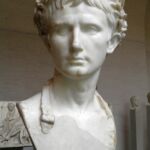Curia Hostilia is one of the oldest and most important places related to the political functioning of ancient Rome. Built according to legend by the third king of Rome, Tullus Hostilius, this curia was the central meeting place of the senate – the most important ruling body in the Roman Republic. It was here that senators met to debate laws, war decisions, and foreign policy, shaping the future of one of the greatest empires of antiquity.
Curia Hostilia was located in the Roman Forum, in the heart of Rome, and served as both a political meeting place and a ceremonial space. Not only Senate meetings were held within its walls, but also the most important public events, including ceremonial receptions and processions.
Built in the 7th century BCE, the Curia Hostilia was destroyed and rebuilt several times. In 52 BCE, after a fire that destroyed the original structure, it was rebuilt by Faustus Cornelius Sulla, and the building was named Curia Cornelia. In 44 BCE, thanks to Julius Caesar, the Roman Forum was rebuilt, and the place of the previous curia was replaced by a new building – Curia Julia.
The original curia was a rather modest building, built of stone and wood. Over time, as the political role of the senate increased, the curia transformed into a more representative structure, corresponding to the prestige of this assembly. The interior was decorated with marble, and in the central place, there was an altar dedicated to the gods of Rome, where senators made offerings before the debates began.
Curia Hostilia was the stage for key political events. It was here that senators discussed the fate of Rome, introduced laws and discussed issues related to territorial expansion. Curia Hostilia also symbolized the continuity of Rome’s power and tradition, constituting the political centre from the times of the kingdom through the republic to the beginnings of the empire.







